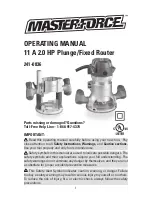
Chapter 3. Security Settings
|
41
N300 Wireless Dual Band ADSL2+ Modem Router DGND3300v2 User Manual
4.
Click
Apply
to have your changes take effect.
The new rule will be listed in the table when you return to the Firewall Rules screen.
Port Forwarding
Using the port forwarding feature, you can allow certain types of incoming traffic to reach
servers on your local network. For example, you might make a local Web server, FTP server,
or game server visible and available to the Internet.
Use the Port Forwarding screen to configure the N300 wireless modem router to forward
specific incoming protocols to computers on your local network. In addition to servers for
specific applications, you can also specify a default DMZ server to which all other incoming
protocols are forwarded. The DMZ server is configured in the WAN Setup screen, as
discussed in
Configuring the WAN Setup Options
on page
117.”
Before starting, you need to determine which type of service, application, or game you will
provide, and the local IP address of the computer that will provide the service. Be sure the
computer’s IP address never changes.
Select
Security > Port Forwarding
in the main menu. The Port Forwarding screen displays:
Figure 22.
WAN Servers
These settings determine which Internet locations are covered by the rule, based on their
destination (WAN) IP address. Select the option you want:
•
Any
. All local IP addresses are covered by this rule.
•
Address range
. If this option is selected, you must fill in the Start and Finish fields.
•
Single address
. Enter the required address in the Start fields.
Log
This determines whether packets covered by this rule are logged. Select the action you
want:
•
Always
. Always log traffic considered by this rule, whether it matches or not. This is
useful when debugging your rules.
•
Never
. Never log traffic considered by this rule, whether it matches or not.
•
Match
. Log traffic only if matches this rule. (The action is determined by this rule.)
•
Not Match
. Log traffic that is considered by this rule, but does not match. (The action is
not
determined by this rule.)
Field
Outbound Rules
Inbound Rules
















































